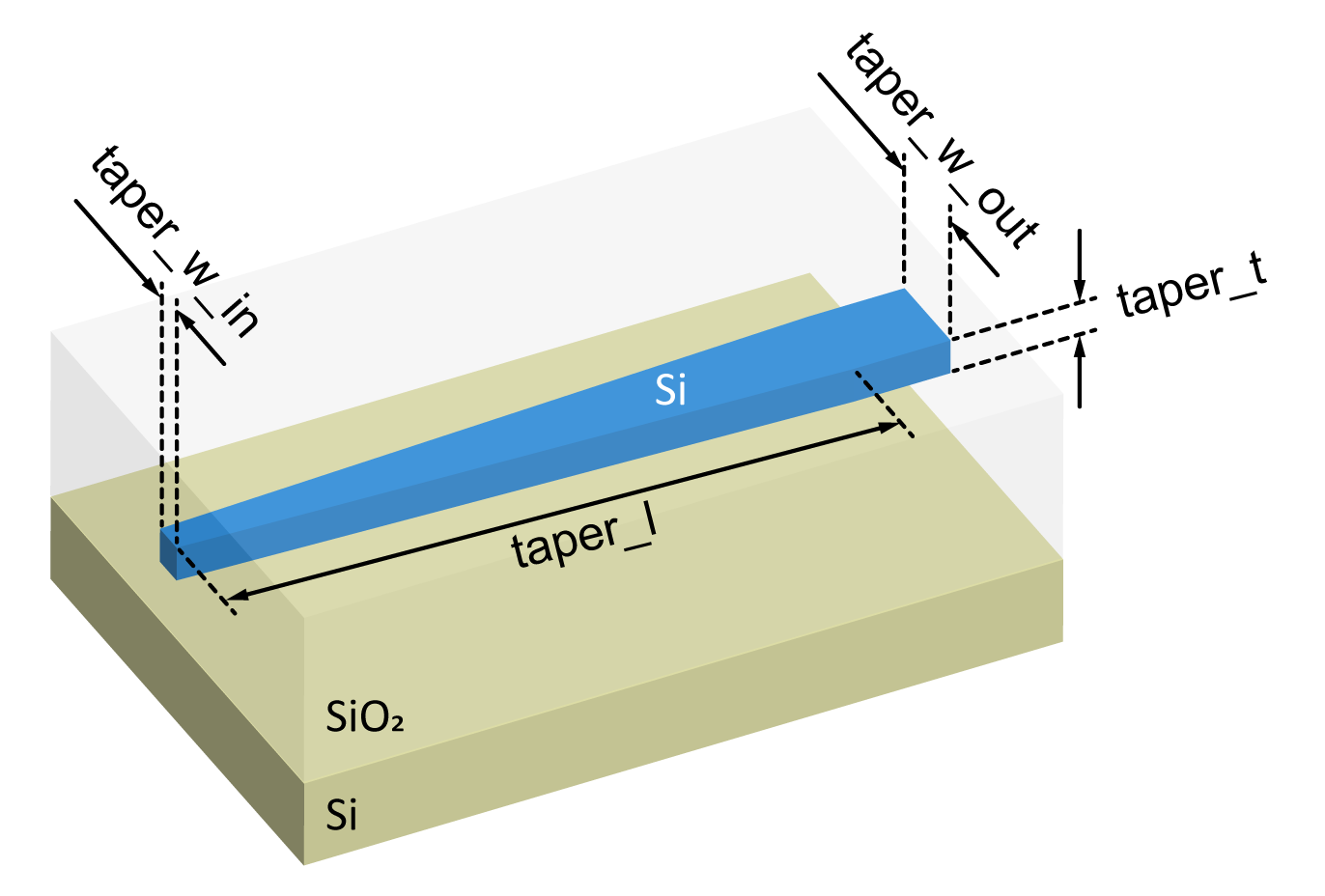# Edge coupler
Fiber-to-chip couplers are essential components in photonic integrated circuits (PICs) that need to couple in/out light using optical fibers. However, the huge mismatch between the mode sizes of a single mode fiber (≈10
In this example, we will show an example of using Tidy3D to evaluate the performance of edge couplers built using inverted taper mode transformers of linear, quadratic, and exponential profiles. We will also see how to set up a Gaussian beam (opens new window) to simulate the field launched by a lensed fiber and the use of Batch (opens new window) simulations to perform parameter sweeps.
To view the full example in Python, please click here (opens new window).
To view the example in our web GUI, please click here (opens new window).

